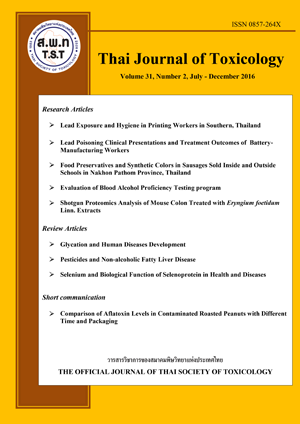Pesticides and Non-alcoholic Fatty Liver Disease
Main Article Content
Abstract
Non-alcoholic fatty liver disease (NAFLD) is the most common type of chronic liver injury worldwide and its spectrum is inclusive of steatosis, steatohepatitis, cirrhosis, and hepatocellular carcinoma. It has been related to obesity, insulin resistance, diabetes, and other metabolic syndromes. Numerous studies have been conducted to test the association between pesticides and fatty liver disease. Many of pesticides are lipophilic and tend to accumulate in the adipose tissue. The liver is the first-line of defense against potentially harmful xenobiotics through metabolism by cytochrome P450 enzymes. However, if the accumulated concentration of pesticides reaches lethal levels due to high dose or chronic exposure, they can overwhelm the liver detoxification capacity and cause toxicity. The mechanisms of their action in NAFLD development and progression involve insulin resistance, deposition of lipids in the hepatic parenchyma, oxidative stress, altered production of adipokines, which ultimately may leading to steatohepatitis and cirrhosis. Although the pathogenesis of pesticides-associated NAFLD is not yet fully understood, there is increasing elucidation of the mechanisms of progression from steatosis to more advanced liver inflammation and fibrosis. Such knowledge may eventually translate into the development of novel treatment strategies for this increasingly important condition.


